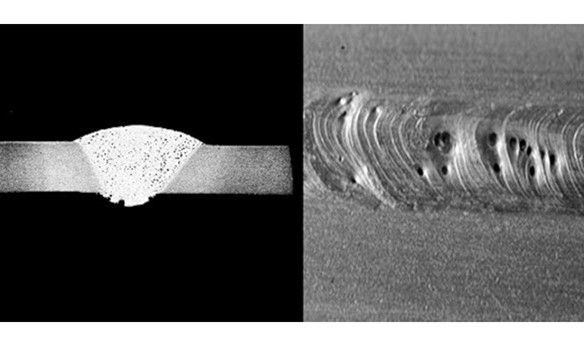Navigating Welding Test Failures: Strategies for Success
- Luis Alejandro

- May 1, 2024
- 2 min read

As welders, regardless of experience, we often find ourselves grappling with the complexities of welding test failures. These setbacks, while frustrating, are not something we can't overcome. In this comprehensive guide, we'll explore the technical factors contributing to welding test failures and provide reliable mitigation strategies to overcome these challenges and achieve success.
1. Understanding Welding Test Failures
Welding test failures can arise from a myriad of technical factors, including inadequate preparation, deviations in welding technique, confidence-related issues, lapses in safety adherence, and the absence of feedback mechanisms. By comprehensively analyzing these factors, welders can gain valuable insights into the root causes of their test failures and devise effective strategies for improvement.
2. Mitigation Strategies for Welding Defects
To address welding test failures effectively, welders must prioritize rigorous preparation and mastery of welding techniques. This entails dedicating ample time to practice and refinement, adhering to prescribed welding procedures, and honing skills through practical application and repetition. Additionally, attention to detail in areas such as arc length, travel speed, and electrode manipulation is crucial for achieving consistent and high-quality welds.
3. Cultivating Confidence and Safety Consciousness
Confidence plays a pivotal role in welding test performance. By employing visualization techniques, cultivating a positive mindset, and seeking opportunities for simulated testing scenarios, welders can bolster their confidence levels and mitigate performance-related anxieties. Furthermore, unwavering adherence to established safety protocols is imperative for safeguarding both welder and workplace safety. Rigorous adherence to industry-standard safety guidelines and protocols is imperative to mitigate occupational hazards and ensure test integrity.
4. Leveraging Feedback Mechanisms
Seeking feedback and guidance from experienced mentors, industry professionals, or qualified instructors is essential for identifying and rectifying deficiencies contributing to welding test failures. Constructive criticism and targeted guidance offer valuable opportunities for skill refinement, error correction, and continuous improvement.
5. Conclusion
All in all, addressing welding test failures requires a multifaceted approach encompassing rigorous preparation, meticulous adherence to welding techniques and procedures, cultivation of confidence, unwavering commitment to safety, and proactive engagement with feedback mechanisms. By implementing these strategies, welders can enhance their test performance, mitigate failure risks, and advance their proficiency and expertise in the welding field.
With these actionable strategies at your disposal, you'll be well-equipped to navigate welding test failures and emerge stronger and more proficient than ever before. So, roll up your sleeves, dive into practice, and let's conquer those welding tests together. Success awaits!
Check out our other blog posts here https://www.southernarc.org/blog
About the author: Luis Alejandro is the owner and one of the instructors at Southern Arc Welding Services Ltd. Co.. He enjoys family, reading books on history, and writing to share his knowledge about the many situations welding can place us in.



Comments